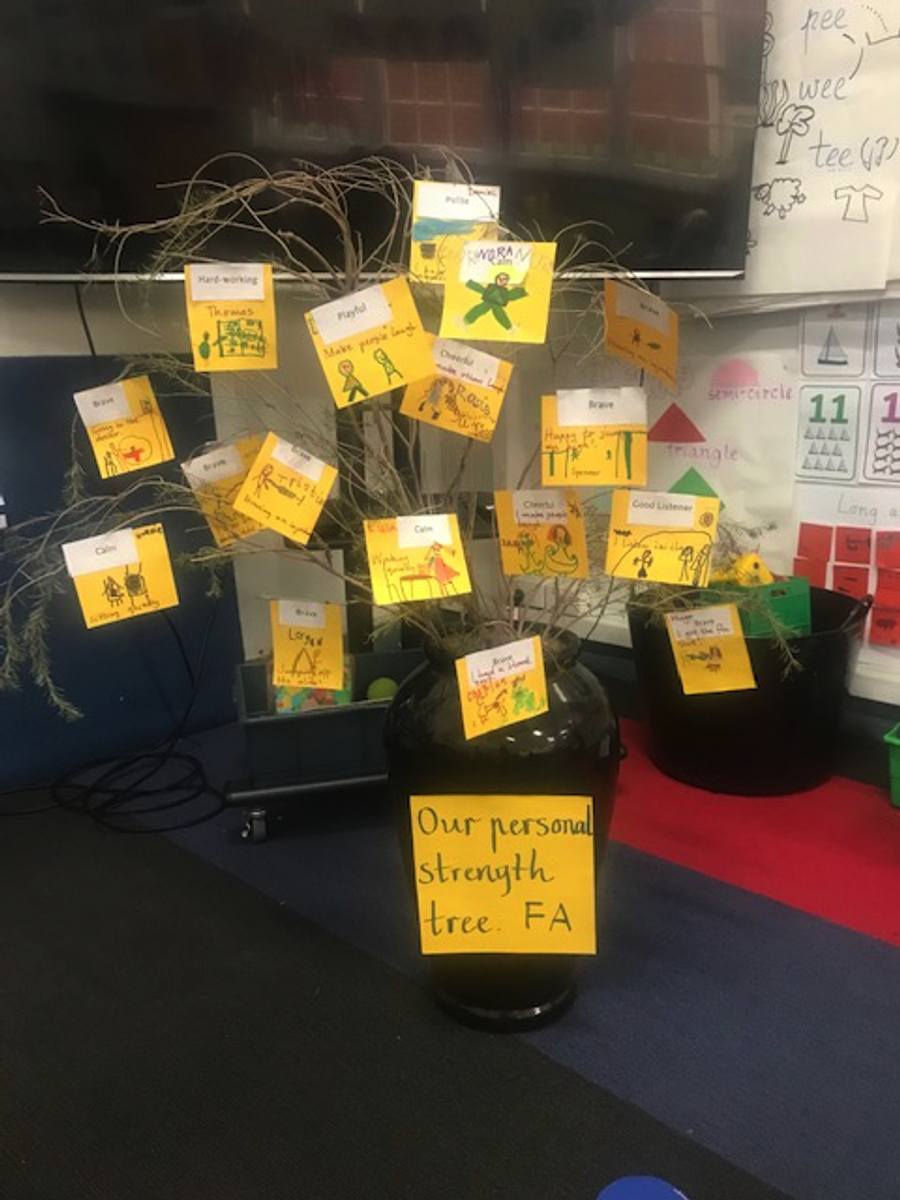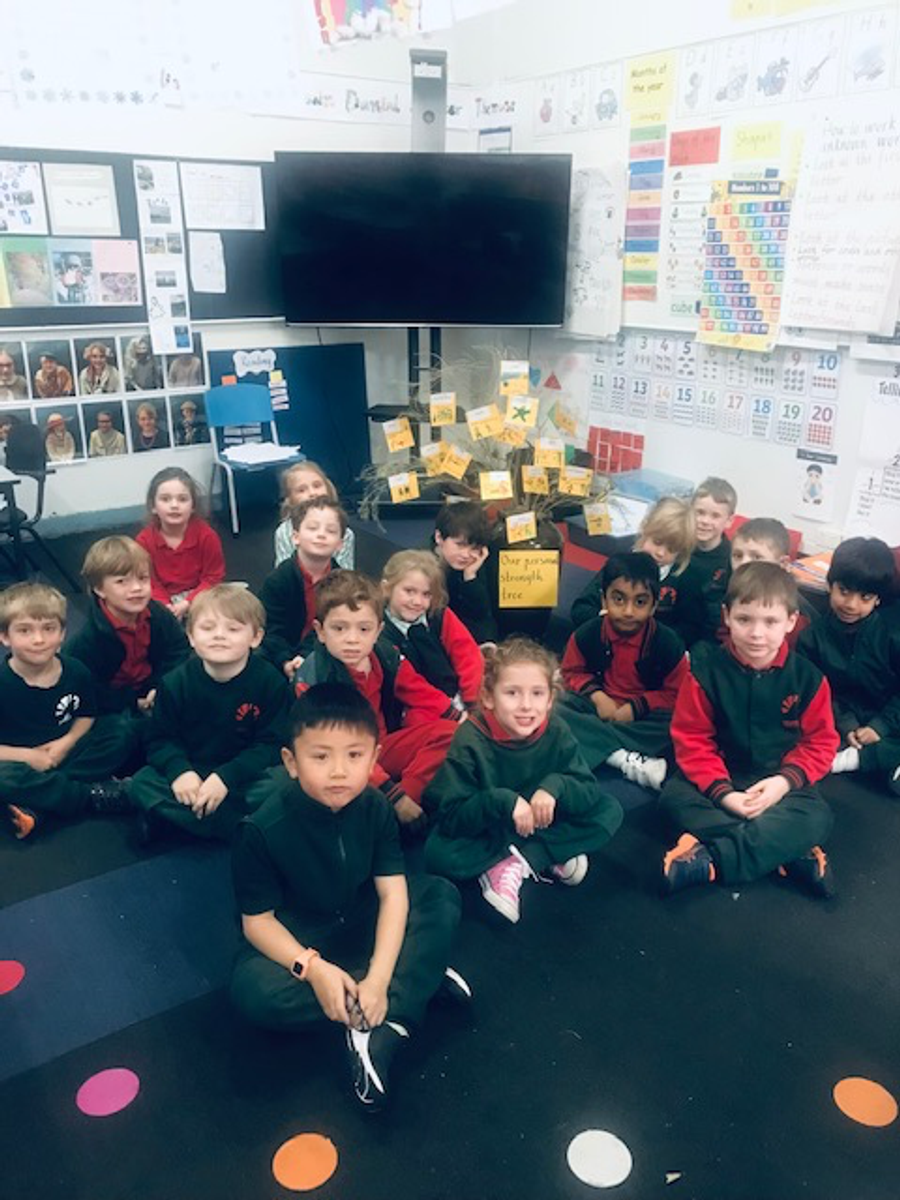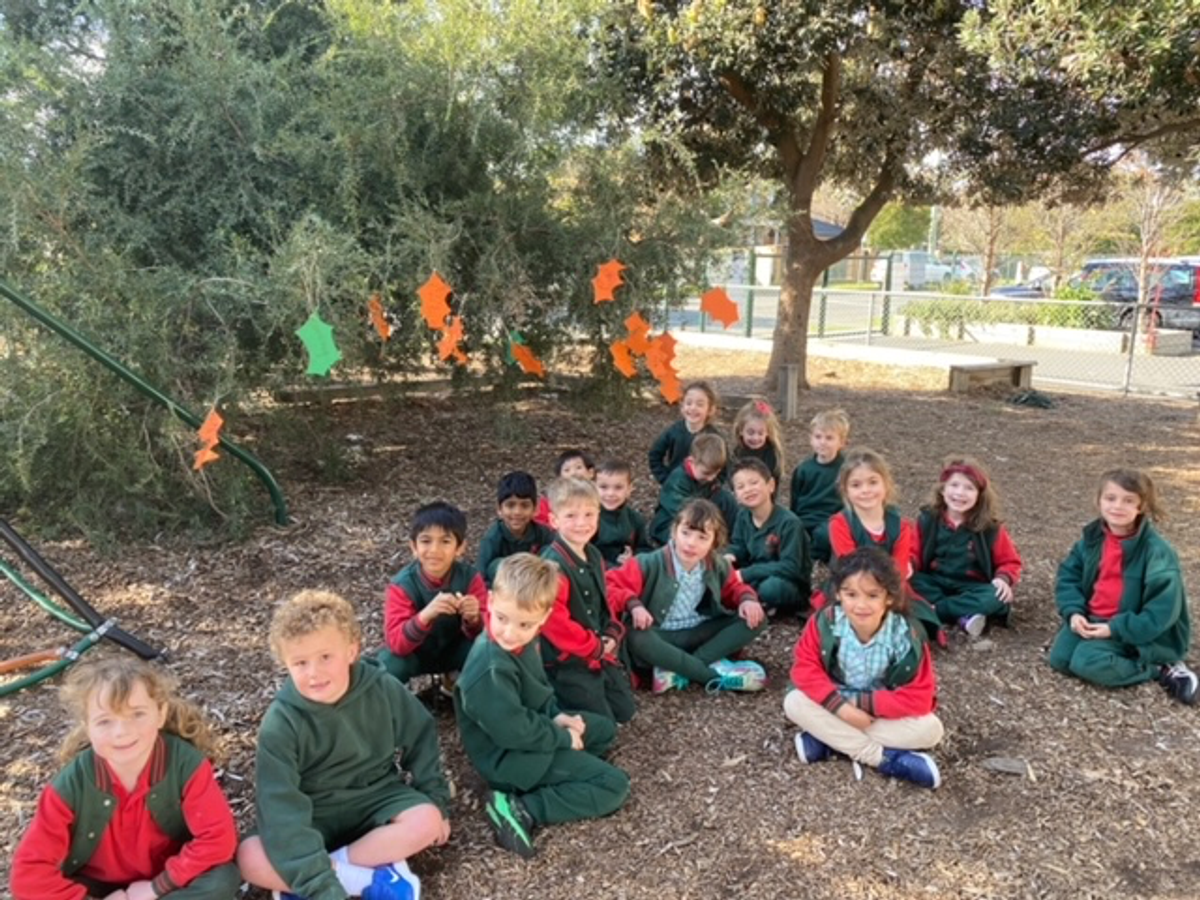Wellbeing

Personal Strengths
Personal strengths help us to be our best selves. In both our personal and social lives, they help us to learn new things, to get along with others and to cope with challenges. This term students across the school have been learning about Personal Strengths. This is the second topic in the Resilience Rights and Respectful Relationships program.
Our students have been developing a vocabulary of personal strengths to help them to recognise and understand strengths and positive qualities in themselves and others. They have learnt what it means to be kind, fair, funny, brave, forgiving, curious to learn, honest, a good listener, neat, hardworking, and generous.
Personal Strengths in Foundation
This term Foundation students have been learning about their Personal Strengths. This week classes discussed a range of different personal strengths, such as brave, hard-working, and caring. Students chose their own strength and drew themselves demonstrating it. Each class created a Personal Strength Celebration Tree. Students had a great time adding their strength to their tree to display in their classroom.
Things to do at home
- Talk with your children about their personal strengths and how they show them.
- Discuss which personal strength characteristic your child would like to practise and help them to notice when they are showing that strength.
- Discuss your personal strengths with your child and ask them what strengths they see in you.
Upcoming Webinar
Michael Grose presents: Changing parenting gears for the teenage years – See the flyer in the newsletter for more information or click on this link to the webinar on the Parenting Ideas website.
Teaching kids to be kind
Judgement and criticism are the stock in trade for many people in today’s fast-paced world. In our playgrounds and parks, children often act cruelly – or are simply uninterested in how other people feel. Little kids, big kids, and even adults can respond reactively and unthinkingly, or sometimes intentionally, with unkindness.
Although being unkind is nothing new (it’s happened from the beginning of humanity), technology is enabling cruelty in faster, easier, anonymous ways. Technology is also making it hard for our kids to develop skills to delay gratification. Exercising impulse control – self regulation – is trickier because waiting isn’t needed. These things combine to make it increasingly hard to be a compassionate and kind person, someone who considers the needs of others rather than acting out of self-interest. It demands intention and commitment.
The helper’s high
Our brains release “feel good” chemicals (like oxytocin, serotonin, and endorphins) which fight stress and make us feel happy when we engage in, or even witness, acts of kindness. It’s called the “helper’s high” and it’s our brains’ way of rewarding us for doing good, making us want to repeat the behaviour to get the same good feeling again. Not only does being kind feel good, but it generally keeps us safe because it makes us more likely to be accepted by social groups. It builds social capital when we are considerate of the needs of others.
Create opportunities for kindness
Even though they are hardwired for kindness we still need to create opportunities for our kids to engage in acts of kindness. We also need them to know what it feels like to have someone treat them kindly (so they know what behaviours to copy, and why kindness is important). So how can you help them?
Model kindness
Show your children how you treat others kindly. Hold open doors for people, put trolleys back that are in the middle of the car park, drop a meal to a sick family member, donate old towels to an animal shelter, let someone in when traffic is heavy.
They don’t have to be grand gestures, just small and gentle ways of considering the needs of others.
Use kind language
Consider how you speak to your child and what you say when you speak. Ask how you speak about others (and yourself). Our kids use our behaviour as templates for how they should act. So let them see your compassion shine through for those around you. Be kind as you listen. Be kind as you talk. Say kind things.
Encourage helping
Is one child great at maths and their younger sibling isn’t? Invite them to teach them or guide them through their homework. Ask them to show you how to play their favourite video game. If they are great at cooking, ask them to help you prepare dinner. Having them involved in prosocial ways gives them a helper’s high.
Build their emotional intelligence
Kids who struggle to regulate and manage their emotions will find it harder to treat others with compassion. An essential part of teaching kids to be kind centres on teaching them to manage challenging emotions and giving them coping strategies to navigate their way through.
- Teach them the words for feelings. Without the right words to share how they feel it can leave kids confused, fearful and frustrated…which only serves to make their big feelings more intense. When you see them experiencing a feeling, name it for them: “I can see that made you so mad”, “I wonder if you felt sad when your friend left you out”.
- Help them identify when they are escalating, but don’t try and reason with them when they are in the “red zone” – we cannot reason with them at this stage as they are in the emotional part of the brain (mid brain) not the part that lets them be logical (pre-frontal cortex). Discuss strategies and practice when they feel calm. Get them doing things like squeezing play dough, talking about how they feel, going for a run, switching on music that makes them feel good, drawing or writing stuff down.
When you do this, you’re being kind, teaching kindness, and helping them be kind to themselves.
In closing
Encouraging kids to be kind is essential in helping them avoid seeking instant gratification, ego-centric solutions, or being cruel. When people are empathic and kind, they are more likely to experience better overall wellbeing, this is in part due to the helper’s high, but also because they feel fulfilled and tend to have better quality relationships. Kindness is cool!
Rachel Tomlinson
Rachel Tomlinson is a registered psychologist and the author of Teaching Kids to be Kind and A Blue Kind of Day. Rachel has presented at national conferences on mental health topics as well as guest lectured about relationships at colleges and universities. She also serves as a subject matter expert for journalists on topics such as parenting, child development, and relationships. For further details visit www.towardwellbeing.com
Amanda Howe
Assistant Principal - Wellbeing







